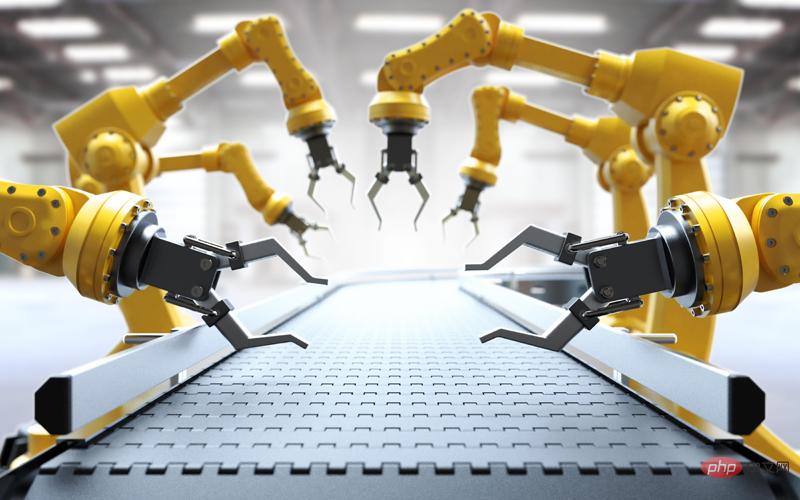
Manufacturing robots are becoming increasingly popular due to their ability to produce products quickly and efficiently. While many different types of robots can be used in manufacturing, industrial robots are the most common. Industrial robots can perform a variety of tasks and are ideally suited for use in manufacturing.
This article will take an in-depth look at industrial robots and discuss some of their key features. We will also explore why they are often used in manufacturing and provide some examples of industries where they are commonly used. Finally, we'll provide tips for choosing the right industrial robot for your business.

Industrial Robots Typically Divided into two major categories: fixed arm robot systems and articulated robot systems.
A fixed-arm robot system consists of a fixed arm connected to one or more joints, allowing it to move in multiple directions. These robots are often used for assembly, welding and other repetitive tasks.
Articulated robot systems have multiple axes connected to allow the robot to move in three-dimensional space. They are often used in pick and place applications due to their flexibility and ability to reach tight spaces.
Another type of robot used in manufacturing is called a mobile robot. These robots transport materials from one place to another and can usually be found in warehouses or factories.
There are many advantages to using robots in manufacturing. They are often faster and more accurate than manual processing, which helps reduce costs and increase efficiency. Additionally, they can be programmed to perform complex tasks with minimal human intervention, thus reducing labor costs. Additionally, robots can work continuously without breaks and do not require the same level of supervision as manual workers.
Another benefit of using robots in manufacturing is that they can help reduce the chance of workplace accidents. When robots take over the jobs of human employees, the likelihood of injury is much less. Finally, robots can help reduce air and noise pollution in manufacturing facilities.
Finally, robots are highly flexible machines that can be easily reprogrammed for different tasks or applications. A robot can often be used for a variety of production tasks, making it an excellent investment for businesses looking to increase productivity.
Although robots have many advantages in manufacturing, there are also some disadvantages. First, robots can be expensive to purchase and maintain. Additionally, they require a certain level of programming knowledge to operate correctly, which can be difficult for smaller businesses that require more resources or expertise.
Additionally, while robots may be able to perform repetitive tasks faster than humans, they still lack the creativity and problem-solving abilities that humans possess. Finally, the use of robots in manufacturing creates job losses as machines replace human labor. Therefore, companies must consider the economic and social impacts of implementing robotics.
Robots are becoming more and more important in manufacturing. Automation and artificial intelligence enable robots to take on more complex tasks, making businesses more efficient and productive. In addition, advances in robotics technology allow robots to work collaboratively with humans, ensuring safety while improving accuracy and performance.
The use of robots also provides companies with new ways to increase profits by improving quality control, increasing product delivery speed, and reducing labor costs. Finally, robots are changing the way we think about production by improving processes, helping us get closer to a fully automated industry.
Industrial robots are mainly used in automobiles, electronics, food and beverages, pharmaceuticals, metal manufacturing, rubber and plastic manufacturing. Automotive companies often use industrial robots for welding and assembly tasks, while electronics manufacturers use them for pick-and-place applications.
Food and beverage companies use robots for packaging and palletizing operations, while pharmaceutical companies leverage the speed and precision of robots for highly precise mixing or weighing tasks. Metal fabrication utilizes robotic arms for the welding process, while rubber and plastics rely on robotic arms to handle materials more accurately than manual workers.
No matter the industry, it’s clear that industrial robots have become an integral part of many production lines around the world. They provide businesses with a reliable source of labor that can work around the clock and often require the same level of supervision as manual workers.

The use of robots in manufacturing will only increase in the coming years. As businesses continue to look for ways to improve their operations, automation solutions are becoming increasingly attractive. This means that demand for robots will only grow as businesses seek more efficient and cost-effective solutions.
Additionally, advances in robotics mean robots can now be used for a variety of tasks, such as 3D printing, machine learning and autonomous navigation. Finally, the development of collaborative robots, or collaborative robots, creates new opportunities for humans and machines to work in harmony.
The above is the detailed content of Which type of robot is most commonly used in manufacturing?. For more information, please follow other related articles on the PHP Chinese website!




